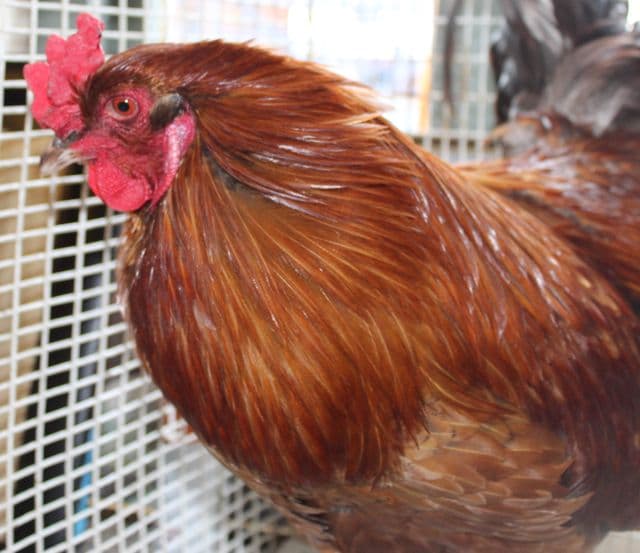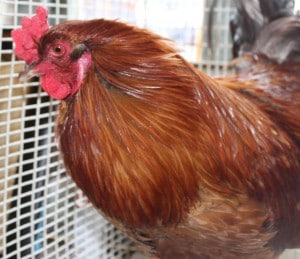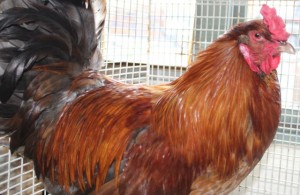Sanctuary Life
Unwanted cockerels
This fine looking cockerel was brought in to us on Valentine’s Day – so naming him was easy. He’d been abandoned on playing fields and a young boy found him and took him home. Valentine was well cared for and soon grew up and then the problems started. He began to crow and the neighbours began to complain. This is why there are so many unwanted cockerels. Unless you have always lived in the country and are used to the early morning cock crows, it is hard to get used to and the noise will wake you up. I love to hear the cocks crow and mostly sleep through it anyway but most people don’t like it.

The cockerel had to go and we’ve been happy to take him in. He’s a youngster, one of last year’s chicks (you can tell the age by the bony growths on the back of a cockerel’s legs – the larger they are the older the bird is). Valentine has short spurs so he’s not very old. Cockerels use their spurs for fighting and hens don’t have them. Fighting is the problem with cock birds, one cockerel and a dozen hens is a happy family. Two cockerels will often fight to the death over who gets the hens. If cockerels grow up together and there are no hens, it is usually peaceful. Introducing a new cockerel into the group is when you get trouble.
So we’ve had to find a place for Valentine where he won’t disturb anyone and there are no potential opponents. At the moment he’s on his own because we put all birds in quarantine for a few weeks to make sure they are healthy. When that’s passed we’ll introduce him to a couple of hens and he won’t be lonely. We get calls asking us to take cockerels in almost every week. We rarely have room because all our groups of hens already have a cockerel in charge. It’s such a pity they can’t all be kept but it’s the law of survival of the fittest – only one male gets to be the leader. Stallions fight with each other, so do dogs and tom cats are notorious for scrapping over the young lady cats.
It brings us back to the day-old dead chicks we feed to our owls and birds of prey. When a hen hatches a clutch of eggs there will always be more male chicks than females. If you get a dozen chicks you can bet that at least seven will be boys. It’s hard to tell the males from the females until the chicks start to develop feathers which is after a few weeks. When you hear the little ones crow you can be sure! Professional poultry farmers are able to sex them at birth – the girls are valued and kept, the boys are disposed. Unless the breed of hens is for eating, the males will be scrawny things, who may grow up to have fine feathers but no one will want them. So the males are usually humanely euthanized shortly after they are born.
Valentine is a survivor though, he has had a lucky escape and will have a long and natural life here with us. Cockerels make fine companions, they are beautiful to see and look after their hens devotedly. If you have a cock with the hens any eggs they lay will be fertile and if the hens sit them (for 21 days) you will have a clutch of chicks hatch out which is one of life’s delights to see. Oh, what do we do about all the cockerels though??? Cock-a-doodle-do!



